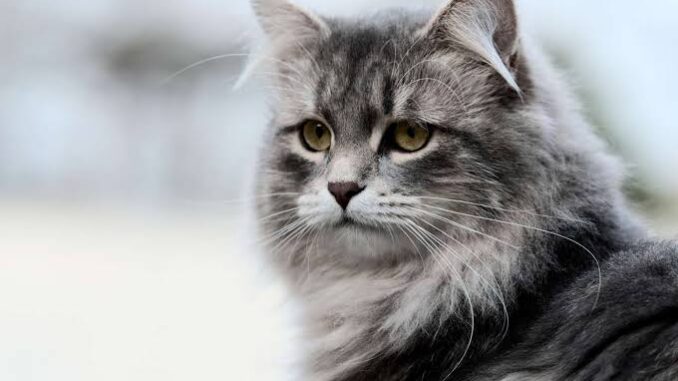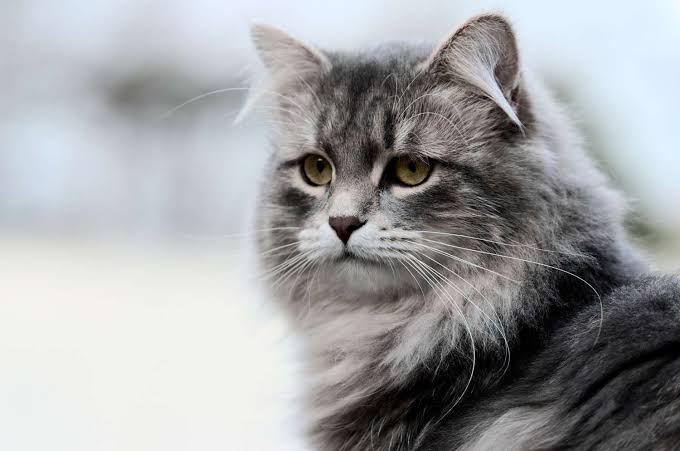
The Best Hypoallergenic Cat Breeds for Allergy Sufferers: For millions of people worldwide, cat allergies are a frustrating barrier to pet ownership.

The good news? While no cat is 100% hypoallergenic, some breeds produce fewer allergens than others, making them suitable companions for allergy sufferers.
What Causes Cat Allergies?
Cat allergies are not caused by fur, but by a protein called Fel d 1, found in:
- Saliva
- Dander (dead skin flakes)
- Urine
When cats groom themselves, saliva spreads the Fel d 1 protein onto their fur, which then dries and becomes airborne — triggering allergies when inhaled.
Common symptoms of cat allergies:
- Sneezing
- Runny or stuffy nose
- Itchy, watery eyes
- Skin rashes
- Coughing or wheezing
- Asthma attacks (in severe cases)
Why Some Cats Are Hypoallergenic
Hypoallergenic cats produce less Fel d 1 or shed less dander and hair, which means:
- Fewer allergens in the home
- Easier cleaning and maintenance
- Reduced symptoms for allergy sufferers
Let’s dive into the best hypoallergenic cat breeds and what makes each one special.
Top 10 Hypoallergenic Cat Breeds
1. Siberian
Origin: Russia
Why Hypoallergenic: Despite their thick coats, Siberians produce lower levels of Fel d 1 than most breeds.
Personality: Affectionate, social, intelligent
Care: Weekly brushing; great with kids and dogs
2. Balinese
Origin: United States
Why Hypoallergenic: Known as the “long-haired Siamese,” Balinese cats produce much less Fel d 1 than typical cats.
Personality: Vocal, affectionate, playful
Care: Moderate grooming needs
3. Oriental Shorthair
Origin: United States
Why Hypoallergenic: Short, fine coat reduces dander and hair loss; lower Fel d 1 production.
Personality: Curious, lively, loyal
Care: Weekly brushing, minimal shedding
4. Russian Blue
Origin: Russia
Why Hypoallergenic: Produces less Fel d 1 and has a dense, plush coat that traps allergens.
Personality: Reserved, gentle, intelligent
Care: Minimal grooming required
5. Bengal
Origin: United States
Why Hypoallergenic: Short, pelt-like coat means less grooming and less dander spread.
Personality: Energetic, intelligent, adventurous
Care: Low grooming needs but high play demands
6. Devon Rex
Origin: England
Why Hypoallergenic: Has a very short, fine coat and sheds very little, reducing allergen spread.
Personality: Playful, quirky, affectionate
Care: Occasional bathing to remove oil buildup
7. Cornish Rex
Origin: England
Why Hypoallergenic: Has only a soft undercoat (no top or guard hairs) and very little shedding.
Personality: Energetic, social, clever
Care: Needs regular bathing to remove skin oils
8. Sphynx
Origin: Canada
Why Hypoallergenic: Hairless — no fur to trap allergens. But note: they still produce Fel d 1 through saliva and skin oils.
Personality: Outgoing, loyal, playful
Care: Needs regular baths to remove oil buildup
9. Javanese
Origin: United States
Why Hypoallergenic: Single-layer coat (no undercoat) means less shedding and fewer allergens.
Personality: Intelligent, interactive, vocal
Care: Low grooming needs
10. LaPerm
Origin: United States
Why Hypoallergenic: Curly coat traps dander; low Fel d 1 production
Personality: Gentle, affectionate, curious
Care: Weekly grooming to maintain coat
READ ALSO: How to Prevent Separation Anxiety in Dogs
Lifestyle Tips to Minimize Cat Allergies
Even with a hypoallergenic cat, managing your environment is key. Here’s how:
1. Clean Regularly
- Vacuum with a HEPA filter
- Use lint rollers on furniture
- Wash bedding, curtains, and your cat’s items weekly
2. Use HEPA Air Purifiers
- Place them in bedrooms and main living areas
- Trap airborne dander and allergens
3. Create Allergy-Free Zones
- Keep your bedroom cat-free
- Use allergen-resistant covers on pillows and mattresses
4. Bathe or Wipe Down Your Cat
- Bathe with vet-approved shampoo (some breeds like Sphynx need it)
- Use hypoallergenic pet wipes if your cat dislikes water
5. Wash Your Hands After Contact
- Avoid touching your face after handling your cat
6. Talk to Your Doctor
- Allergy shots (immunotherapy) or antihistamines can help reduce reactions
Future Solutions: The Allerca Cat and Genetic Research
Some companies have claimed to breed genetically hypoallergenic cats (e.g., Allerca cats), but these remain controversial and very expensive.
Excitingly, recent research into gene-editing technologies (like CRISPR) aims to suppress Fel d 1 production altogether. While not yet widely available, this offers future hope for allergy-prone cat lovers.
FAQs
Are hypoallergenic cats truly allergy-free?
No. Hypoallergenic cats still produce allergens, but in smaller amounts. Many allergy sufferers tolerate them better, but reactions vary by individual.
Which cat breed is the most hypoallergenic?
The Siberian and Balinese often top the list due to significantly lower Fel d 1 protein levels. The Sphynx is also popular due to its lack of fur, though regular bathing is crucial.
Can I build immunity to my cat over time?
Some people develop partial tolerance after prolonged exposure. However, others may experience worsening symptoms. Consult an allergist before introducing a pet.
Do kittens produce fewer allergens than adult cats?
Temporarily, yes. Kittens produce less Fel d 1, but levels increase as they mature.
Can neutering/spaying reduce allergens?
Yes. Neutered/spayed cats often produce lower levels of Fel d 1, especially males.
Are female cats less allergenic than males?
Generally, yes. Female cats and neutered males tend to produce less Fel d 1 than intact males.
Is it better to have one cat or multiple?
Fewer cats = fewer allergens. If you’re allergy-prone, stick to one low-allergen breed and avoid adopting multiple cats.
Are long-haired cats worse for allergies?
Not necessarily. Some long-haired breeds (like the Siberian) produce less Fel d 1. The issue is more about protein production than coat length.
Can bathing reduce allergens significantly?
Yes. Regular bathing or wiping down removes dried saliva and dander. However, not all cats tolerate baths, so consult your vet for safe routines.
Should I allergy-test before adopting a cat?
Absolutely. Spend time with the breed you’re considering and get an allergy test from your doctor. Some breeders even offer trial visits.
For cat lovers who suffer from allergies, hope is not lost. With the right combination of low-allergen breeds, environmental control, and medical support, owning a cat can still be a joyful and healthy experience.
Whether you fall for the affectionate Siberian, the quirky Devon Rex, or the elegant Russian Blue, remember: each cat is unique, and so is each person’s sensitivity.
Choose wisely, care deeply, and enjoy the companionship of a feline friend — without constant sneezing.
Leave a Reply
You must be logged in to post a comment.